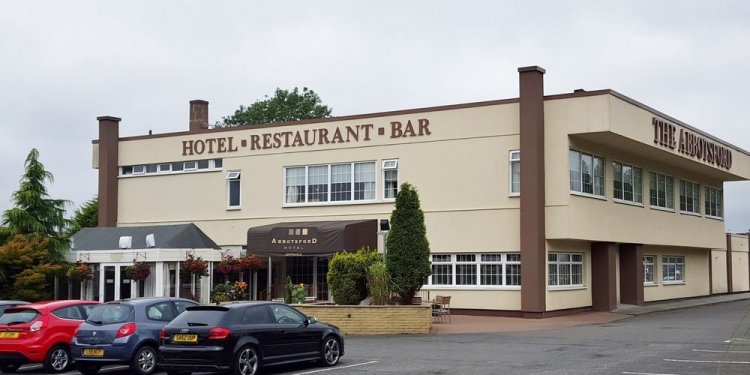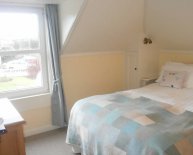
Guest House Dumbarton England
 As a domestic analysis institution, Dumbarton Oaks features always provided living accommodations for the fellows. Although the rooms may well not usually have already been faultless, fellows often reminisce over their particular time at Dumbarton Oaks with fondness, appreciative of this possiblity to get acquainted with colleagues outside of the work place. From its inception as Dumbarton Oaks analysis Library and range in 1940, the amount of fellows has exploded from only two senior fellows and five junior fellows seeking Byzantine research to between thirty and fifty scholars employed in a variety of areas. This development has needed Dumbarton Oaks to get and renovate present residences.
As a domestic analysis institution, Dumbarton Oaks features always provided living accommodations for the fellows. Although the rooms may well not usually have already been faultless, fellows often reminisce over their particular time at Dumbarton Oaks with fondness, appreciative of this possiblity to get acquainted with colleagues outside of the work place. From its inception as Dumbarton Oaks analysis Library and range in 1940, the amount of fellows has exploded from only two senior fellows and five junior fellows seeking Byzantine research to between thirty and fifty scholars employed in a variety of areas. This development has needed Dumbarton Oaks to get and renovate present residences.
If the Blisses’ property was converted into a study institute, they commissioned Thomas T. Waterman to refashion the Beatrix Farrand–designed "home" on S Street. Although built-in 1934, the Dwelling had been intended to function as the future quarters of resident scholars at Dumbarton Oaks when the property ended up being used in Harvard University. This occurred in 1940, therefore the very first fellows used residence in February 1941. In keeping with Edwardian-era traditions, fellows had been separated by sex, with single guys moving into the Fellows Building (after that called the Quarters), and ladies residing in bed rooms however home plus in understanding now the Refectory. It absolutely was customary for fellows to take-all three meals together daily——affording variety options for both . Meals within the Fellows Building had been exposed to all staff under Giles Constable, whom served as director from 1977 to 1984, so as to make socialization opportunities much more available. In 1981, Dumbarton Oaks hired architect George Hartman to replace the Fellows Building, an undertaking that included enlarging the living area, adding a front porch to support a fire escape system, and setting up central air-conditioning, among various other improvements. This building is today known as the Guest home, so when the name reveals, functions as housing for going to lecturers also Dumbarton Oaks friends.
In 1981, Dumbarton Oaks hired architect George Hartman to replace the Fellows Building, an undertaking that included enlarging the living area, adding a front porch to support a fire escape system, and setting up central air-conditioning, among various other improvements. This building is today known as the Guest home, so when the name reveals, functions as housing for going to lecturers also Dumbarton Oaks friends.
Fellows Building Living Room, 1962
Fellows Building Bed Room, 1962
Fellows Building Dining Room, 1962
Fellows Building Kitchen, 1977
Fellows Building Family Area, 1981
Fellows Building Bedroom, 1981
Fellows Building Living Area, 1977
 Fellows Building Kitchen, 1981
Fellows Building Kitchen, 1981
In order to accommodate the growing amount of Fellows, Dumbarton Oaks leased flats in a condo building on Wisconsin Avenue labeled as Sherry Hall, starting in the 1970s and enduring through to the 1990s. Sherry Hall is normally called having had suboptimal conditions and, because ended up being the residence farthest from the Main House, it absolutely was an interim option at best.
Family area in a Sherry Hall apartment, 1985
Room in a Sherry Hall apartment, 1985
Kitchen in a Sherry Hall apartment, 1985
Later, in the springtime of 1994, Dumbarton Oaks acquired Los Angeles Quercia (“The Oak” in Italian) to expand fellows’ housing. La Quercia was built in 1922, and had functioned as a multifamily apartment building. In 1995, main air-conditioning ended up being installed, and, from 1997 through 1998, the building underwent a number of masonry and paint restorations—repairs that were both aesthetic and functional. Given that the brand new Fellowship House happens to be completed, La Quercia is used to accommodate going to scholars during educational 12 months and Harvard interns during summertime. In the foreseeable future, Dumbarton Oaks continues to make use of La Quercia within capability, possibly even growing the scope of its Harvard-related activities along with other scholastic programs.
 first-floor forward entry at La Quercia, 1993
first-floor forward entry at La Quercia, 1993
Dining area and kitchen at Los Angeles Quercia, 1993
During summer time and autumn of 2008, two brand-new properties on R Street had been acquired to present extra housing hotels: the Oaks, a seven-unit townhouse, together with Dumbarton, a one-bedroom condominium. The Oaks subsequently underwent a large-scale renovation procedure, that has been completed in August 2011 and included the installation of a unique roofing system, new cooling and heating methods, and a new meeting room, among various other improvements.
As it became clear that Los Angeles Quercia needed significant amounts of repair as well as then would-be struggling to fulfill specific requirements of fellowship system, Dumbarton Oaks started to look into obtaining a unique building to house its fellows. After scouting different properties around Georgetown, a building within place of R Street and Wisconsin Avenue appeared due to the fact best answer. Known as the Fellowship House, this new building, which underwent a large-scale construction task as a result of its purchase this year, features twenty-five residential units also a big area for receptions and group meetings. Particularly, this new building has achieved LEED Gold status because of its powerful dedication to ecological sustainability, demonstrated in part through its green, or residing, roof and its particular reduced amount of impervious areas. As director Jan Ziolkowski stated during groundbreaking ceremony in 2014, this new Fellowship House “does maybe not belong to a single class of Fellows or even to all previous and present Fellows assembled. Rather, it really is designed to embody and facilitate a more substantial perfect of fellowship.” The Fellowship House plays a part in the institution's attempts to transcend interdepartmental divisions in the service to build increased unity toward a shared Dumbarton Oaks mission.




















